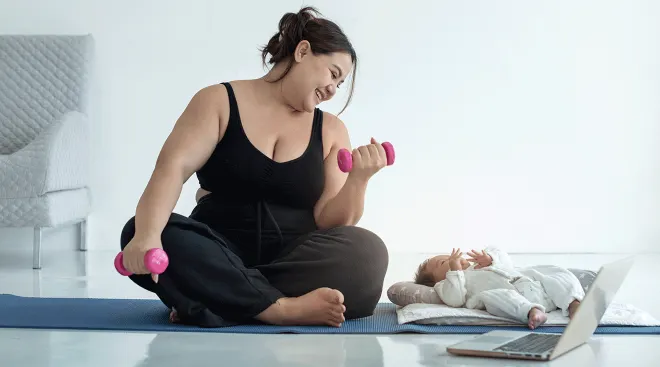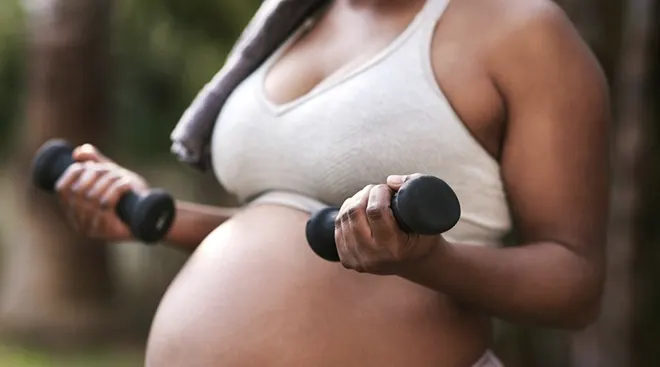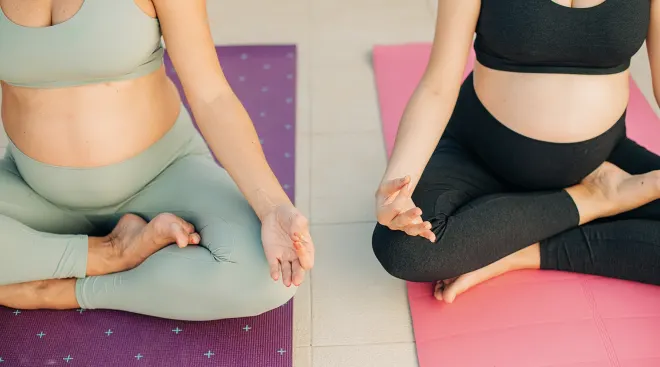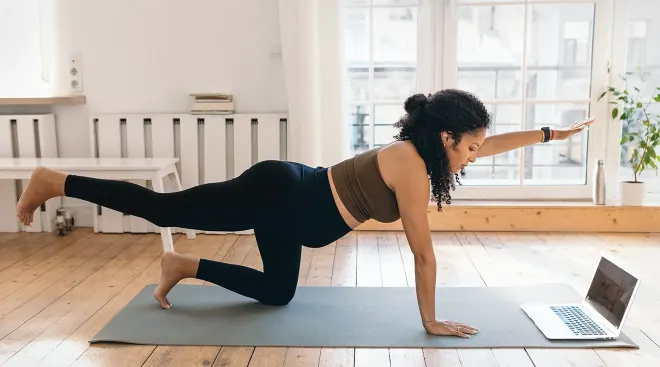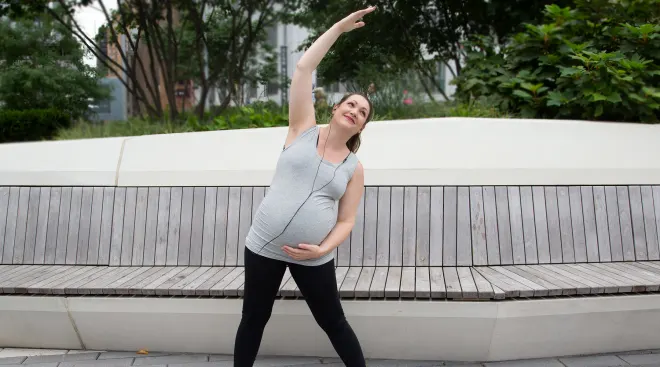Yesterday, the American College of Gynecologists (ACOG) released their updated guidelines on exercise during pregnancy and postpartum—including a new section for athletes.
According to the updated guidelines, competitive athletes should be cautious and careful to avoid hyperthermia and blunt trauma. They should also make sure to drink plenty of water and stay properly hydrated, as well as make sure to eat well and get the calorie amount they require to prevent any weight loss. The guidelines also recommend competitive athletes be closely supervised by their doctors, as they may have a more strenuous training schedule and want to resume high-intensity training during postpartum sooner than other women.
For elite athletes, defined by the ACOG as someone with “several years of experience in a sport who has competed with other high-level performers and trains year-round at a high level,” resistance training could be an area of concern.
“It’s always best for women, especially athletes and those with specific health conditions, to consult with their physician or clinicians and undergo clinical evaluation before undertaking any exercise program,” Meredith L. Birsner, MD, a lead author of the committee opinion, stated in a press release. “Generally, we want to encourage women who already engage in exercise to continue to engage in some form of physical activity that is appropriate for them as an essential component of a healthy lifestyle and pregnancy.”
The guidelines maintain that exercise is beneficial for women during pregnancy and postpartum for multiple reasons. They also include an updated and expanded section with new findings that exercise may also reduce the risk of gestational diabetes, preeclampsia, cesarean birth and may also be a factor in preventing depressive disorders in the postpartum period.
“Overall, the evidence suggests that aerobic and strength conditioning exercises should be encouraged before, during, and after pregnancy,” Birsner said.
There is undoubtedly a stigma associated with pregnancy for female athletes, and they risk losing their contracts and pay for choosing to become moms. While more athletes have spoken out against the treatment, more systems need to be in place to protect female athletes, and these updated guidelines are a step in the right direction.
Please note: The Bump and the materials and information it contains are not intended to, and do not constitute, medical or other health advice or diagnosis and should not be used as such. You should always consult with a qualified physician or health professional about your specific circumstances.
Navigate forward to interact with the calendar and select a date. Press the question mark key to get the keyboard shortcuts for changing dates.






































